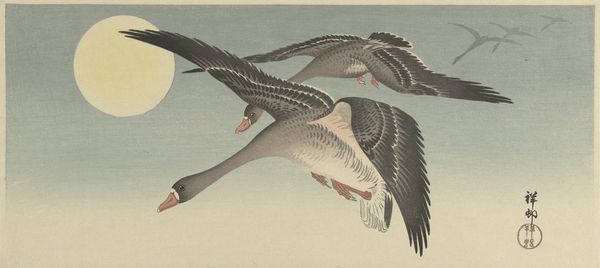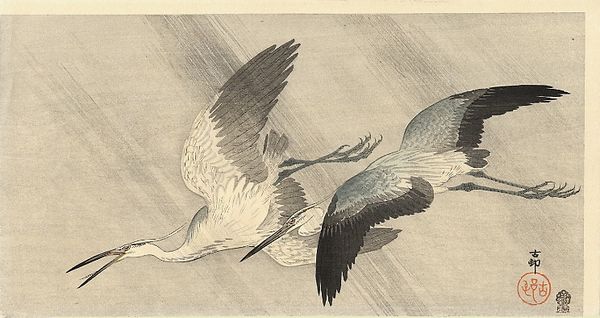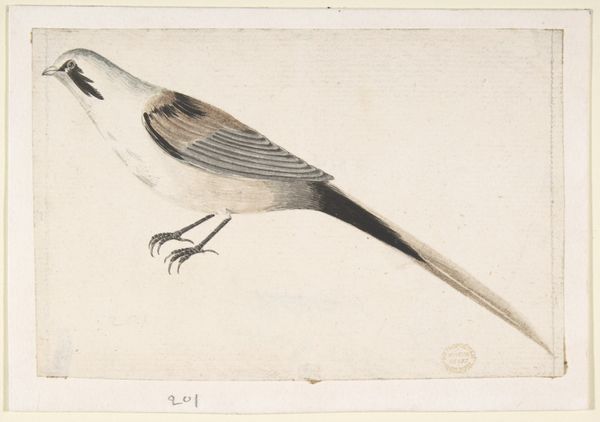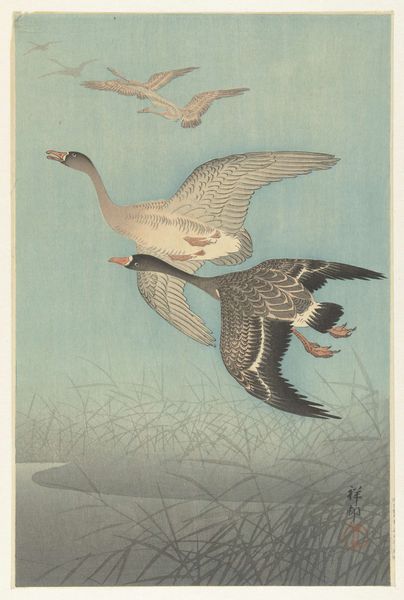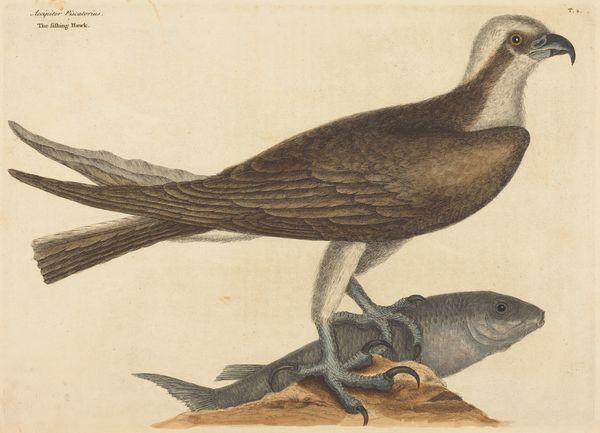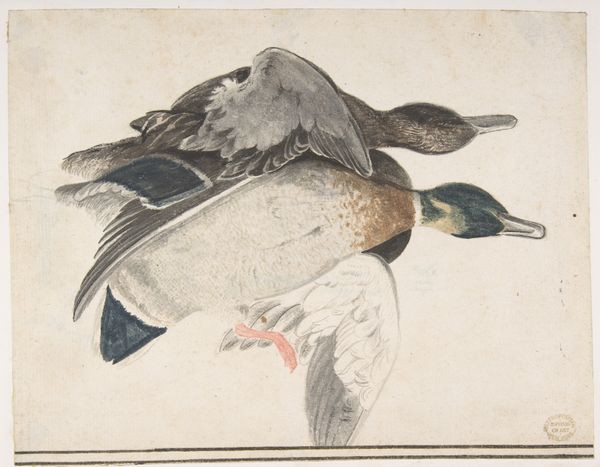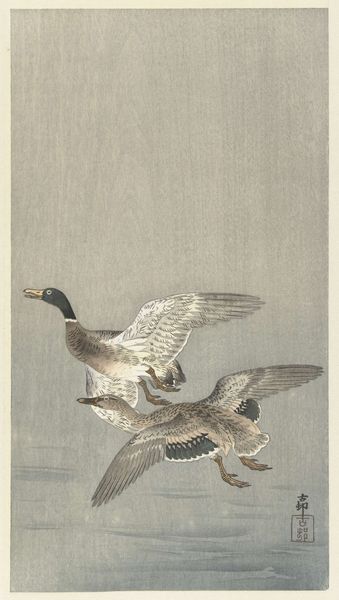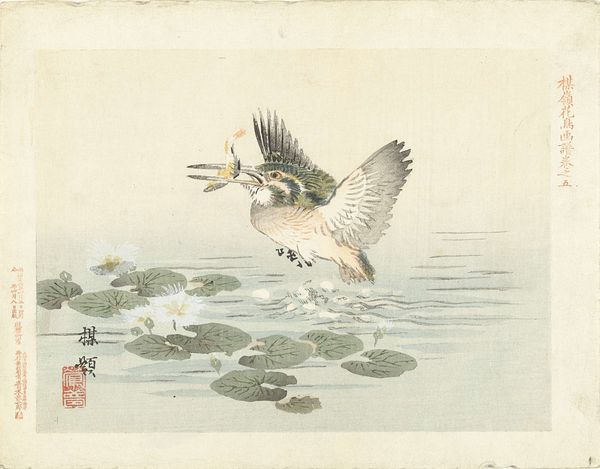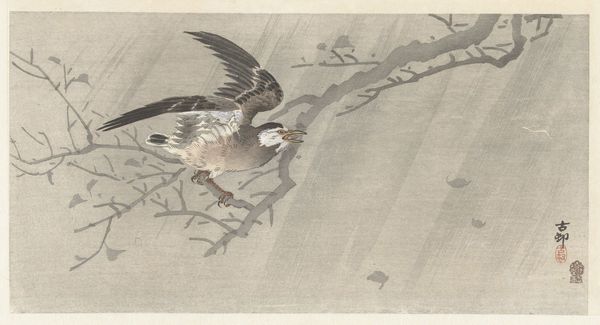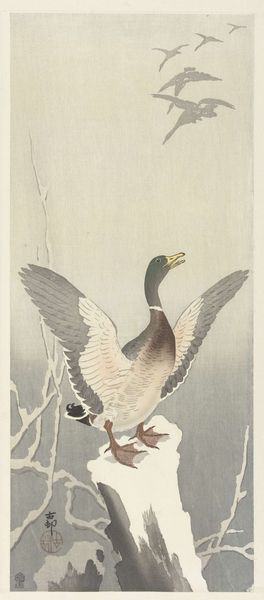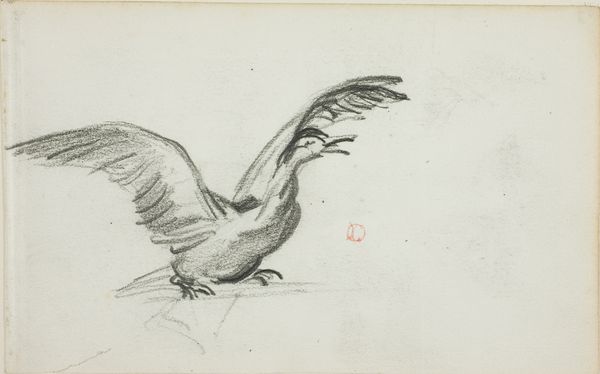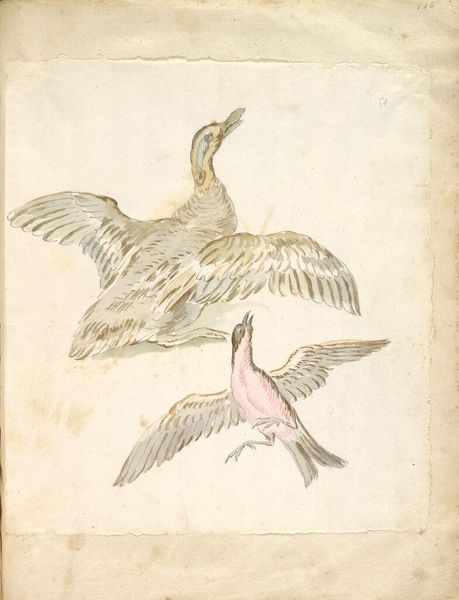
drawing, print, watercolor, pencil
#
drawing
# print
#
watercolor
#
pencil drawing
#
coloured pencil
#
pencil
#
15_18th-century
#
watercolour illustration
#
naturalism
#
watercolor
Dimensions: plate: 25.9 x 35.4 cm (10 3/16 x 13 15/16 in.) sheet: 32.2 x 45.9 cm (12 11/16 x 18 1/16 in.)
Copyright: National Gallery of Art: CC0 1.0
Curator: Here we have Mark Catesby's "The Rice-bird (Emberiza oryzivora)", possibly created between 1731 and 1743. It is a lovely piece, rendered with pencil, watercolor, and printmaking techniques. Editor: It's strikingly precise! There is such acute focus on anatomical accuracy. I also notice the subdued palette, except for the lively vermillion legs and beak of the bird diving in. Curator: Catesby was, after all, a naturalist documenting the flora and fauna of the American colonies. Consider the context: natural history illustration was intertwined with colonial expansion. Prints like these served as records but also fueled European fantasies of the New World. Editor: I can see that. It feels almost like a scientific specimen laid out for observation. The composition draws the eye towards the forms themselves, how the texture and shape of the feathers form almost regular geometric patterns. The dynamic diagonals create the sensation of flight and a curious sense of depth as if one bird dives downward into our viewing space, and the other gently comes down onto the verdant surface of a mound. Curator: He was aiming for scientific accuracy. Note, however, how Catesby deviated from strict objectivity by incorporating behavioral insights. The diving bird is clearly hunting, its posture conveying intense focus. Editor: That dynamism truly enlivens the work! The white bird contrasts dramatically with its more earth-toned companion perched below. The rendering creates two simultaneous yet separate fields, which, nevertheless, operate inside the same observational picture plane. I want to keep searching for connections and contrasts between both birds' position, stance, and direction. Curator: Yes, the composition orchestrates both, making it more than a mere depiction; it's a commentary on nature's activity and harmony, made available to the educated classes to appreciate both for aesthetics as well as science. Editor: What initially seemed straightforward now has richer complexities as we uncover a fusion of form, observation, and the historical lens of its time. Curator: Indeed, Catesby provides a small glimpse of our natural past from an age when exploration and understanding often advanced hand in hand.
Comments
No comments
Be the first to comment and join the conversation on the ultimate creative platform.
